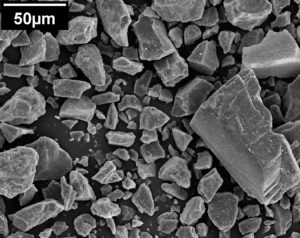 Research photos of lunar regolith simulant, or lunar soil simulant, taken by CEE Professor Khalid Alshibli for his geotechnical research, will be used as part of a permanent visual display at a world-class space museum currently under construction in the Al-Sha’ab district of Kuwait City, Kuwait. The museum will be one of four that will cover Arabic Science, Space, Natural History and Science, which together will make up the Sheikh Abdullah Al Salem Cultural Centre. Specifically, The Arabic Science Museum will be an interactive exploration of Islamic civilizat
Research photos of lunar regolith simulant, or lunar soil simulant, taken by CEE Professor Khalid Alshibli for his geotechnical research, will be used as part of a permanent visual display at a world-class space museum currently under construction in the Al-Sha’ab district of Kuwait City, Kuwait. The museum will be one of four that will cover Arabic Science, Space, Natural History and Science, which together will make up the Sheikh Abdullah Al Salem Cultural Centre. Specifically, The Arabic Science Museum will be an interactive exploration of Islamic civilizat ion, examining the people and innovations that played a crucial part in the development of intellectual thought in our world.
ion, examining the people and innovations that played a crucial part in the development of intellectual thought in our world.
The photos selected for The Arabic Space Museum depict macroscopic images of the lunar regolith simulant, which was created to mimic the geotechnical properties of lunar regolith, since actual lunar soil is not available to most researchers due to the small collection samples brought from Apollo missions.
Alshibli, who worked in NASA’s Marshall Space Center in Huntsville, AL, between 1995-2001, has researched the strength properties of JSC-1A lunar regolith simulant and strength properties of sand including testing sand aboard NASA space Shuttles. His research, in conjunction with then CEE graduate student of Louisiana State University Alsidiqi Hasan, was conducted to predict strength properties of lunar regolith, which will be critical for NASA’s future lunar exploration missions. More information about Professor Alshibli research can be found at http://web.utk.edu/~alshibli/research.php.